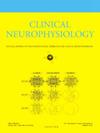解剖电功能调查在罗兰和周围罗兰癫痫:立体脑电图的概念框架
IF 3.6
3区 医学
Q1 CLINICAL NEUROLOGY
引用次数: 0
摘要
目的建立一个假设驱动的立体脑电图(SEEG)框架,探索罗兰区和罗兰区周围(RPR)区域,并加强对癫痫发生网络及其功能意义的理解。方法回顾性分析2020年1月~ 2024年2月连续102例SEEG病例。8例患者(中位年龄:38岁)在RPR区域内有疑似癫痫区(EZ)。分析了SEEG轨迹、电极位置、电刺激试验和手术结果。结果平均14个SEEG电极(范围:11-19)沿7个关键轨迹正交植入:背侧组瞄准(1)运动前皮层/前SMA(辅助运动区),(2)中央前回/SMA,(3)中央后回/中央沟,(4)中央后沟/邻近顶叶;以及针对(5)前扣带中皮层、(6)后扣带中皮层和(7)后扣带皮层的腹侧组。在31个电极上对197个接触对进行电刺激,结果显示87%(27/31)引起了感觉运动反应。所有SEEG探测都定位了EZ。所有随后的四次手术导致癫痫发作自由,在平均19个月的随访期间(范围:9-33),感觉运动障碍最小。结论7个关键的SEEG轨迹提供了全面的RPR覆盖,实现了可靠的功能和EZ映射。意义该解剖-电功能框架使SEEG探查合理化,支持有效切除,提高RPR癫痫的手术效果。本文章由计算机程序翻译,如有差异,请以英文原文为准。
Anatomo-Electro-Functional Investigations in Rolandic and Peri-Rolandic Epilepsies: A conceptual framework for Stereo-EEG
Objective
To develop a hypothesis-driven framework for stereoelectroencephalography (SEEG) exploration in the Rolandic and Peri-Rolandic (RPR) regions and enhance understanding of epileptogenic networks and their functional implications.
Methods
We reviewed 102 consecutive SEEG cases (January 2020 − February 2024). Eight patients (median age: 38 years) with suspected epileptogenic zones (EZ) within the RPR regions were included. SEEG trajectories, electrode locations, electrical stimulation tests, and surgical outcomes were analysed.
Results
An average of 14 SEEG electrodes (range: 11–19) were orthogonally implanted along seven key trajectories: a dorsal group targeting (1) the premotor cortex/pre-SMA (supplementary motor area), (2) precentral gyrus/SMA, (3) postcentral gyrus/central sulcus, and (4) postcentral sulcus/adjacent parietal lobe; and a ventral group targeting (5) the anterior mid-cingulate cortex, (6) posterior mid-cingulate cortex, and (7) posterior cingulate cortex. Electrical stimulation on 197 contact pairs across 31 electrodes revealed that 87 % (27/31) elicited sensorimotor responses. All SEEG explorations localized the EZ. All four subsequent resective surgeries led to seizure freedom, with minimal sensorimotor deficits over a mean 19 months follow-up (range: 9–33).
Conclusions
Seven key SEEG trajectories provided comprehensive RPR coverage, enabling reliable functional and EZ mapping.
Significance
This anatomo-electro-functional framework rationalizes SEEG explorations and supports effective resections, enhancing surgical outcomes in RPR epilepsies.
求助全文
通过发布文献求助,成功后即可免费获取论文全文。
去求助
来源期刊

Clinical Neurophysiology
医学-临床神经学
CiteScore
8.70
自引率
6.40%
发文量
932
审稿时长
59 days
期刊介绍:
As of January 1999, The journal Electroencephalography and Clinical Neurophysiology, and its two sections Electromyography and Motor Control and Evoked Potentials have amalgamated to become this journal - Clinical Neurophysiology.
Clinical Neurophysiology is the official journal of the International Federation of Clinical Neurophysiology, the Brazilian Society of Clinical Neurophysiology, the Czech Society of Clinical Neurophysiology, the Italian Clinical Neurophysiology Society and the International Society of Intraoperative Neurophysiology.The journal is dedicated to fostering research and disseminating information on all aspects of both normal and abnormal functioning of the nervous system. The key aim of the publication is to disseminate scholarly reports on the pathophysiology underlying diseases of the central and peripheral nervous system of human patients. Clinical trials that use neurophysiological measures to document change are encouraged, as are manuscripts reporting data on integrated neuroimaging of central nervous function including, but not limited to, functional MRI, MEG, EEG, PET and other neuroimaging modalities.
 求助内容:
求助内容: 应助结果提醒方式:
应助结果提醒方式:


